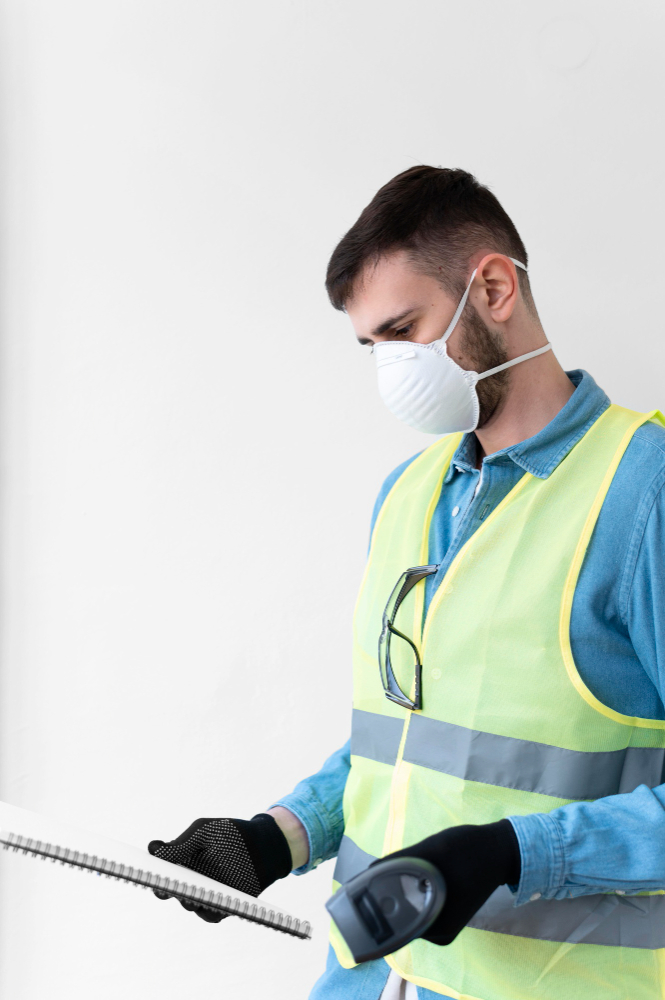Boost Industrial Safety with a Smart PPE Detection System

In today’s complex and high-risk industrial environments, safety cannot be left to chance. Industries such as manufacturing, construction, oil and gas, logistics, and mining are continuously seeking ways to strengthen their occupational safety standards. With stricter regulations and growing workforce expectations, companies are now turning to cutting-edge technologies like the PPE detection system to proactively mitigate risks and ensure real-time compliance.
One such innovation is the PPE detection system, a smart solution that combines artificial intelligence and video analytics to monitor and enforce the use of personal protective equipment in real time. This automation not only enhances compliance but also plays a pivotal role in reducing workplace accidents and downtime.
Why Traditional Safety Monitoring Falls Short
Manual safety inspections, while still widely used, come with several limitations. They are time-consuming, subject to human error, and often reactive rather than preventive. Despite best efforts, there are inevitable lapses—workers might forget to wear their gear, inspectors may miss violations, or busy worksites may overwhelm manual monitoring systems.
This is where intelligent safety systems step in to fill the gap. Using AI-powered surveillance, companies can maintain round-the-clock oversight and significantly reduce the margin for error in high-risk zones.
Understanding the PPE Detection System
A PPE detection system leverages computer vision and machine learning algorithms to automatically detect whether workers are wearing required safety gear such as:
- Helmets or hard hats
- Safety vests
- Gloves
- Face masks or shields
- Safety goggles
- Protective footwear
Once integrated with surveillance infrastructure, the system scans real-time video feeds and instantly identifies PPE compliance violations. If a worker is detected without the necessary gear, the system sends automated alerts to supervisors, allowing swift corrective action.
Key Benefits of PPE Detection Systems
1. 24/7 Automated Monitoring
Unlike manual inspections, smart detection systems can operate continuously without fatigue. They ensure constant surveillance in critical zones and respond immediately to violations.
2. Real-Time Alerts and Reporting
These systems provide live notifications when PPE non-compliance is detected. Additionally, historical data and analytics reports allow safety managers to review trends and identify recurring issues.
3. Reduced Workplace Incidents
By ensuring that all personnel are equipped with the proper gear, PPE detection drastically reduces the likelihood of injury or fatality.
4. Improved Compliance and Audit Readiness
Industries that are heavily regulated benefit from automated systems that can track compliance records, support internal audits, and meet legal standards more efficiently.
5. Operational Cost Savings
Preventing accidents leads to fewer work disruptions, legal liabilities, and insurance claims—making PPE detection systems a financially sound investment over time.
The Role of Video Analytics in the Safety Revolution
The emergence of intelligent safety platforms is part of a broader trend toward data-driven workplace governance. Industries and governments alike are using video analytics not only to monitor safety but also to enhance overall decision-making, security, and efficiency.
In fact, How Video Analytics is Becoming an Integral Part of Urban Governance illustrates how this same technology is being adapted for traffic management, crowd monitoring, and public safety in cities. The principles are the same: automated detection, instant alerts, and actionable data.
This overlap between urban and industrial applications is creating a new ecosystem of smart environments—whether on a factory floor or in a bustling city square.
Top 5 Companies Offering PPE Detection Systems
As adoption accelerates, several companies are leading the charge in delivering reliable, scalable PPE detection solutions. Below are five noteworthy providers making an impact:
- Vehant Technologies – Recognized for AI-powered industrial and urban surveillance solutions with robust PPE compliance monitoring capabilities.
- IntelliVision – Offers deep learning-based PPE analytics that can be integrated with existing security cameras.
- Viisights – Specializes in behavioral video analytics and includes PPE detection in their real-time safety monitoring suite.
- Senstar – Provides perimeter intrusion detection and video analytics, including modules for industrial safety compliance.
- Kogniz – Delivers smart workplace safety solutions with real-time PPE compliance checks and predictive risk assessment.
Each of these companies is advancing the field by applying AI and analytics to previously manual, error-prone processes.
Challenges to Consider
Despite the benefits, implementing a PPE detection system requires thoughtful planning and execution. Key challenges include:
- Camera Placement and Calibration: Coverage gaps or poor angles can hinder detection accuracy.
- False Positives/Negatives: AI models must be fine-tuned to local environments and gear variations.
- Data Privacy and Worker Trust: Transparency about surveillance use is critical to avoiding resistance from employees.
- Integration with Existing Systems: Seamless coordination with access control, alarms, or incident management tools is essential for full functionality.
Companies must address these concerns through proper training, ethical data practices, and iterative system improvements.
Conclusion
Creating a safe, compliant, and efficient workplace is a shared responsibility. However, in high-risk environments, technology must play a leading role. The PPE detection system exemplifies how AI can drive real-time compliance, reduce incidents, and foster a culture of accountability.
As industries look toward the future, those that invest in smart safety solutions today will reap the rewards of fewer accidents, stronger compliance, and a more resilient workforce tomorrow.


